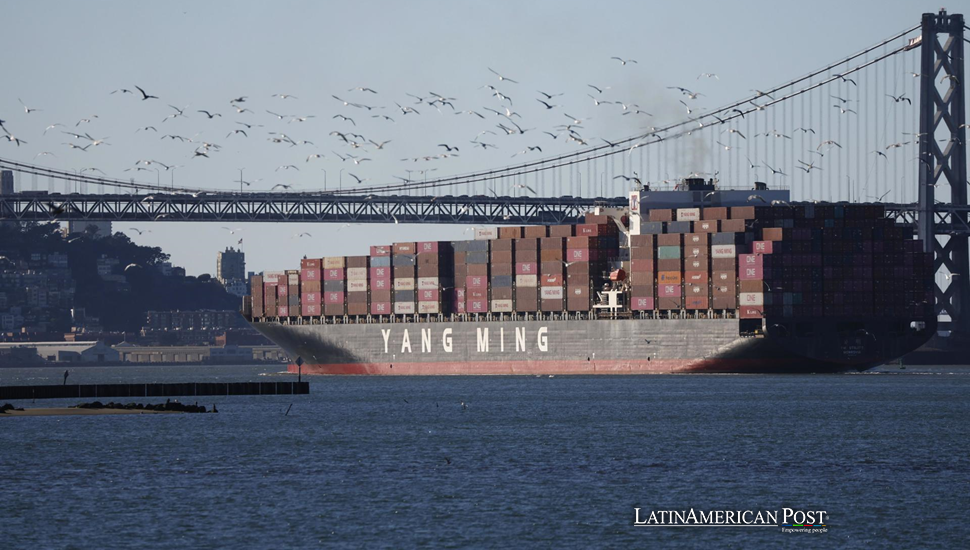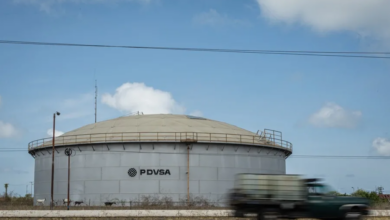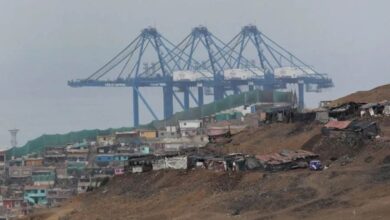China amplía su influencia marítima en América Latina

China está incrementando su dominio en el sector marítimo de América Latina, inundando la región con exportaciones de grúas e invirtiendo fuertemente en infraestructura portuaria. Estas acciones están vinculadas a la Iniciativa de la Franja y la Ruta de Pekín y desafían la influencia de EE. UU. en medio de crecientes tensiones comerciales.
Aumento de exportaciones de grúas chinas
Las exportaciones de grúas de China hacia América Latina se han disparado, reflejando la creciente presencia de Pekín en proyectos de infraestructura en la región. Según datos de aduanas chinas, las exportaciones de grúas a América Latina aumentaron un 47% interanual en los primeros 10 meses de 2024.
Perú y México están entre los mayores receptores de este incremento. En Perú, las exportaciones de grúas aumentaron casi un 132% solo en octubre, con un valor total de envíos de 143 millones de dólares en el año. En México, el aumento fue aún más impresionante, con un crecimiento del 193% interanual y un pico del 1,202% en agosto.
Uno de los ejemplos más destacados es la monumental inversión de China en el megaportuario de contenedores de Chancay, en Perú, inaugurado durante la visita del presidente Xi Jinping a principios de este mes. Este puerto, parte clave de la Iniciativa de la Franja y la Ruta de China, representa las grandes ambiciones del país en América Latina. Con el potencial de reducir hasta en 12 días los tiempos de envío entre Shanghái y Perú y disminuir los costos logísticos en un 20%, este proyecto subraya la determinación de China de convertirse en una fuerza dominante en las redes comerciales de la región.
Las inversiones portuarias de Pekín transforman la región
La estatal china Shanghai Zhenhua Heavy Industries lidera el mercado de grúas de barco a muelle, controlando el 70% del sector. Este dominio es significativo, especialmente en América Latina, donde la empresa desempeña un papel clave. Este papel resalta los objetivos más amplios de la Iniciativa de la Franja y la Ruta, que busca mejorar la conectividad global a través de proyectos de infraestructura.
En Panamá, sede del mundialmente famoso Canal de Panamá, las exportaciones de grúas de China aumentaron un asombroso 1,150% interanual en los primeros 10 meses de 2024. Solo en junio, el incremento fue impresionante: un 5,497%, impulsado por un auge en la construcción portuaria. En los últimos tres meses, Shanghai Zhenhua envió 18 grúas a Panamá, mejorando significativamente su infraestructura de transporte marítimo y fortaleciendo la posición estratégica de China en la región.Estos eventos no son aislados. Informes indican que China ha invertido en proyectos portuarios en 16 de los 20 países con mayores conexiones marítimas. Más de una cuarta parte del comercio global de contenedores en 2023 pasó por terminales parcialmente propiedad o controladas por empresas chinas.
Aumento de tensiones con Estados Unidos
La creciente influencia de China en el sector marítimo de América Latina ocurre en medio de un aumento de tensiones con Estados Unidos. Washington está preocupado por los sistemas de vigilancia en las grúas portuarias chinas. Como resultado, ahora se aplica un arancel penal del 25 % a las grúas chinas de barco a puerto que ingresan a EE. UU.
El arancel comenzó en septiembre y ya ha reducido las exportaciones chinas a Estados Unidos, casi un 66 % menos que el año pasado. El nuevo presidente de EE. UU., Donald Trump, intensificará estas medidas, incluso proponiendo un arancel del 25 % a las importaciones mexicanas. Esto podría afectar las exportaciones chinas que pasan por puertos mexicanos para evitar aranceles directos.
Analistas advierten que las políticas estadounidenses podrían dañar aún más las relaciones con América Latina. En esta región, las inversiones de China son vistas como muy beneficiosas para la infraestructura y el comercio. También se habla de que EE. UU. podría intentar bloquear productos provenientes de puertos con inversiones chinas, como Chancay, lo que posiblemente crearía nuevas barreras comerciales.
El futuro de los puertos de América Latina
Las inversiones estratégicas de China en los puertos de América Latina están redefiniendo las dinámicas del comercio global. Al financiar y construir infraestructura clave, Beijing asegura rutas comerciales y refuerza su influencia a nivel mundial.
Esta rápida expansión conlleva riesgos y beneficios significativos. A medida que China profundiza sus lazos con América Latina, enfrenta desafíos por parte de Estados Unidos y otras potencias. Existe un riesgo real de aranceles más altos, restricciones comerciales o reacciones políticas, especialmente con la administración Trump enfocada en limitar la influencia china. Sin embargo, el potencial de crecimiento económico y mejora en las capacidades comerciales también es considerable, lo que hace que las decisiones de los países latinoamericanos sean de gran peso y relevancia.
Para los países de América Latina, las inversiones chinas representan tanto oportunidades como desafíos. Una infraestructura mejorada promete crecimiento económico y mejores capacidades comerciales, pero también hay preocupaciones sobre la dependencia a largo plazo del dinero y la tecnología china.
La presencia de China en América Latina demuestra un plan audaz para aumentar su poder en una región tradicionalmente influenciada por Estados Unidos. Beijing está invirtiendo en grúas, capital y construcción en los puertos latinoamericanos, transformando el comercio en la región.
Lea también : El Enfrentamiento por los Derechos Laborales en México Respaldará los Negocios Modernos
Sin embargo, la rivalidad entre Estados Unidos y China genera incertidumbres significativas sobre el futuro del comercio global y el equilibrio de poder en América Latina. La dirección de este cambio es incierta: podría haber crecimiento o tensiones crecientes. El impacto de las acciones de China ya es evidente, pero el futuro sigue siendo incierto, lo que añade complejidad e interés a la situación.




